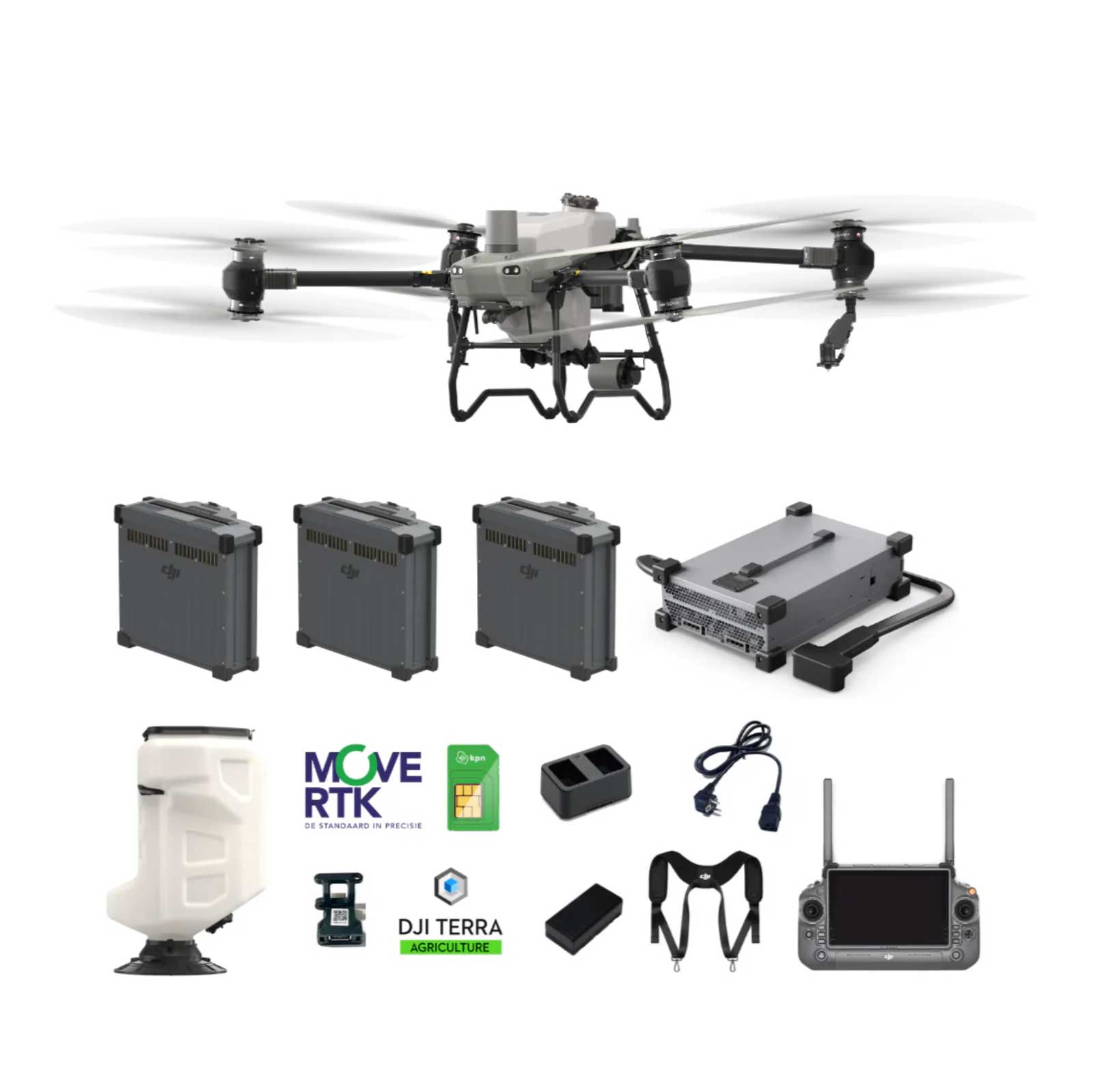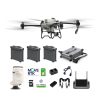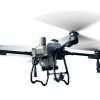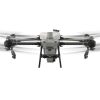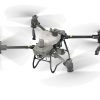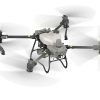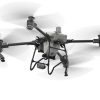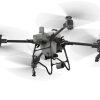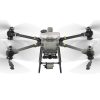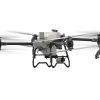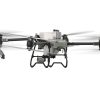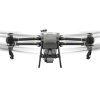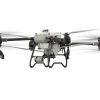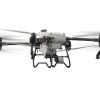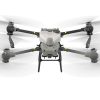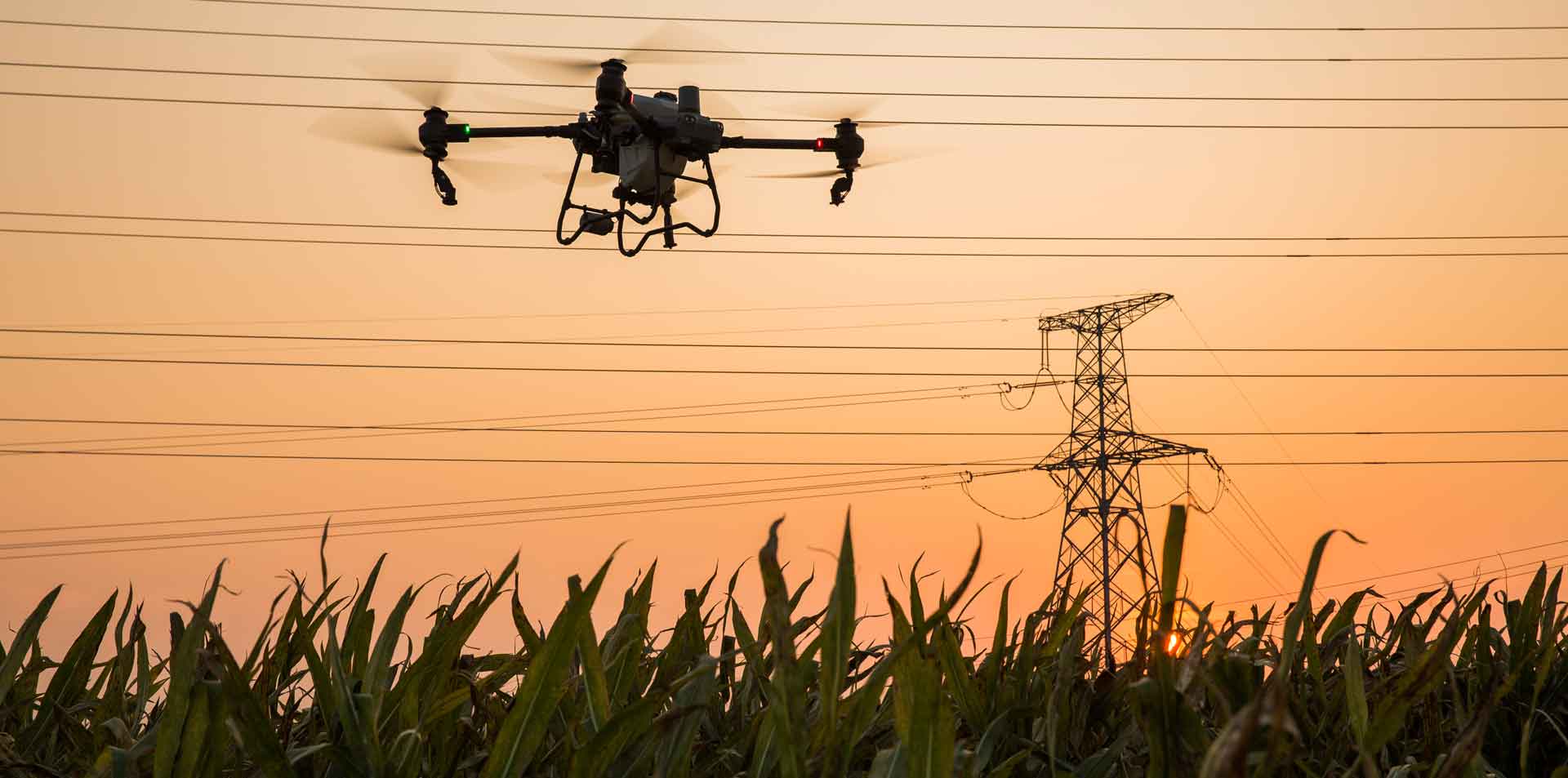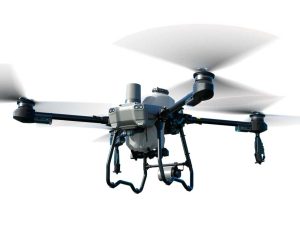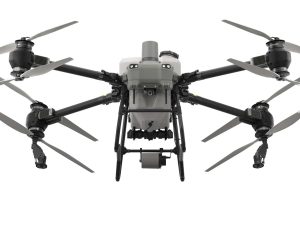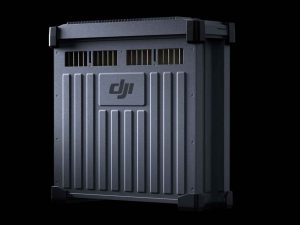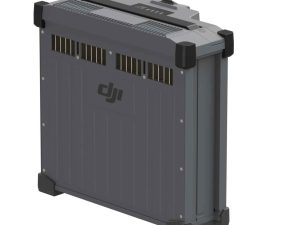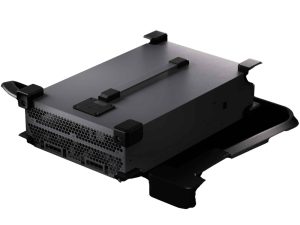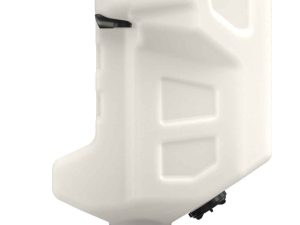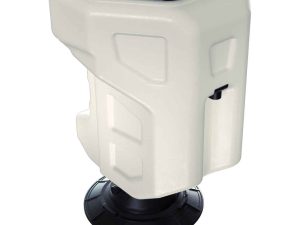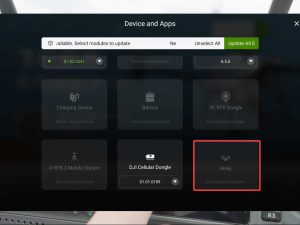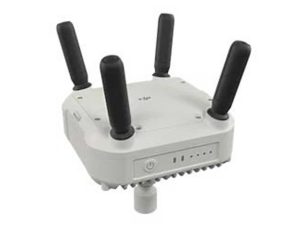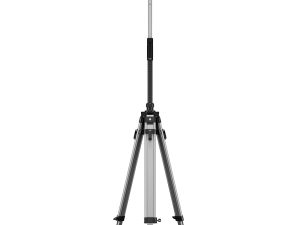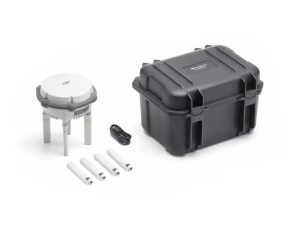DJI Agras T50 Fly More Combo
£25,299.00
- Includes extra DB1560 batteries & C10000 charger
- 40 L spray tank & 75 L spreader capacity
- Dual atomising sprinklers for even coverage
- RTK-ready with radar & vision sensing
- Foldable, durable contractor-grade airframe
DJI Agras T50 — Agriculture Fly More Combo (UK)
The DJI Agras T50 Fly More Combo is a turnkey bundle for UK farms and contractors who need
high-throughput spraying and spreading with minimal downtime. It pairs the T50 aircraft with extra
DB1560 batteries, a C10000 fast charger, the T50 spreading system,
and software/services that get you productive on day one.
Why choose the Fly More Combo?
- Maximum uptime: Multiple DB1560 packs and a high-power charger let you cycle batteries while you refill, keeping the aircraft in the air during short weather windows.
- End-to-end workflow: Includes DJI Terra Agriculture (1-year) and RTK connectivity for precise, repeatable operations and fast job setup.
- Both spray & spread: The T50 sprayer and included spreading system cover foliar applications and granular jobs with one platform.
- Contractor-ready: Accessories and spares reduce turnaround times on multi-farm routes and seasonal peaks.
UK-specific benefits & use cases
- Short spraying windows: Extra batteries + fast charging help you exploit weather gaps and complete work before wind or rain returns.
- Multi-farm contracting: Fly one battery, charge one, prep one — a rotation that keeps pace with refill stops and reduces time parked at the headland.
- Variable-rate programmes: Use Terra/RTK to build prescription maps for targeted inputs on cereals, potatoes, OSR and grassland.
- Seasonal peaks: During growth-regulator or foliar-feed periods, the extra packs minimise bottlenecks and increase hectares per day.
- Rural connectivity: Cellular dongle + RTK subscription support reliable corrections where fixed bases aren’t practical.
How many hectares per hour can a DJI Agras T50 crop spraying drone cover?›
In broadacre work, a well-set-up DJI Agras T50 can reach ~21 ha/hour in favourable conditions. Orchard and vineyard jobs are typically lower (~4 ha/hour) due to tighter turns, elevation changes and terrain-follow settings.
What is the DJI Agras T50 spray tank size and flow rate?›
The T50 has a 40 L liquid tank. With standard dual atomising nozzles, flow reaches up to ~16 L/min. Upgrading to the four-sprinkler setup can push this to ~24 L/min, subject to product and setup.
What droplet sizes and spray width does the T50 achieve?›
Droplet sizes range from 50–500 μm. Spray swath is typically 4–11 metres at ~3 m AGL depending on droplet level, altitude, and speed. Match settings to product label and target canopy for best results.
Can the DJI Agras T50 spread seed and granular fertiliser?›
Yes. The spreading system holds up to 75 L / 50 kg of dry granules and can output up to 108 kg/min. Small-gate settings allow for low-rate seeding applications.
Does the T50 support Reverse Directional Spray?›
Yes. Reverse Directional Spray enables application while reversing at row ends, improving coverage and reducing the need for tight turns.
Is the T50 suitable for orchards, vineyards, or hilly terrain?›
Yes. It uses phased-array radar and binocular vision to support obstacle avoidance and terrain-follow, making it ideal for orchards, vineyards and sloped fields.
Which controller does the DJI Agras T50 use?›
The T50 uses the DJI RC Plus controller. If you own a T25 and already use an RC Plus, it is typically compatible with updated firmware.
Do I need RTK for drone spraying?›
RTK is highly recommended for accurate field boundaries, precise headlands, route sharing, and consistent overlap. Use NTRIP or a compatible base station.
How long does the T50 fly and how do I maintain uptime?›
Expect 10–20 minutes per battery. Use multiple DB1560 batteries with a high-output charger (e.g. C10000) to sync recharge times with tank refill intervals (~9–12 minutes).
What charging setup is recommended for UK farms?›
Use a high-power charger on a 220–240V supply or a compatible field generator. Shade batteries, avoid overheating, and maintain airflow during charging. Contact us for guidance on UK-ready kits.
What types of products can the T50 apply?›
It can apply approved agricultural liquids such as pesticides, foliar feeds, and liquid fertilisers. Check label compatibility and clean the system after use to avoid contamination.
How do I set accurate litres-per-hectare on the T50?›
Configure L/ha using the DJI Agriculture app. Set speed, height, droplet level and swath. Always calibrate flow, test a strip, and verify with refill totals.
Can the T50 support variable-rate spraying?›
Yes. Import zone-based prescriptions from DJI Terra, SmartFarm or your GIS system to apply variable rates. File formats and workflow must be compatible.
How do I clean the spray system?›
Flush with clean water after every job. Clean nozzles, filters and pipes. Inspect gaskets and fittings. Store the unit drained and dry, and follow DJI’s service schedule.
Can I fly the T50 in wind, rain or dust?›
Fly only within manual limits. Avoid heavy rain. Keep electronics dry, batteries cool, and clean the spreading system regularly when in dusty fields.
How many crew members do I need for Agras operations?›
One person can fly, but a second person improves productivity by managing refills and batteries. For large jobs, consider adding a bowser driver or field support.
Can I reuse routes across DJI Agras drones?›
Yes — routes can be shared across Agras models. Always confirm parameters (speed, swath, tank size) before use and do a short test run to validate.
Is drone spraying legal in the UK?›
Yes — with the correct approvals. You’ll need CAA authorisation, PA certification, HSE compliance and valid insurance. Most T50 use will fall under the Specific category with a SORA-based safety case. Contact us to get started.
Will the T50’s downwash damage crops?›
Not if used properly. Set the right height, speed and droplet size. Downwash helps improve canopy penetration while minimising drift — if operated correctly.
How does a drone sprayer compare to a tractor boom?›
Drones excel in soft, wet or inaccessible areas, reduce compaction and can spot-apply with precision. Tractor booms still outperform in scale but have limitations on terrain and patchwork fields.
What PPE is required when using spray drones?›
Use PPE as per the chemical label. Wear gloves, masks and coveralls when mixing or cleaning. Operate from a clean, cordoned staging area and carry spill kits.
What support does Drone Sales UK offer for DJI Agriculture?›
We offer UK setup, training, spares, repairs and operational guidance. We also advise on power systems, chargers, bowsers and documentation.
How much does a DJI Agras T50 cost in the UK?›
Price depends on configuration (spraying only, spreading add-on, extra batteries, etc). Contact us for a quote or on-farm demo.
Are finance or leasing options available?›
Yes. Drone Sales UK offers seasonal finance and lease packages tailored to farm workloads (subject to status).
What’s in the combo
- DJI Agras T50 aircraft + remote controller
- 3 × DB1560 Intelligent Flight Batteries
- 1 × C10000 Intelligent Charger (high-power fast charging)
- DJI Agras T50 Spreading System
- MoveRTK subscription incl. SIM (1 year) + DJI Cellular Dongle
- DJI Terra Agriculture licence (1 year, up to 3 devices)
- AC cable, extra WB37 battery (total 2), and WB37 USB-C charging hub
DJI Agras T50 — Technical Specifications
Heavy-lift spraying and spreading drone built for high-volume precision agriculture. The T50 supports dual atomisation, intelligent obstacle sensing, RTK positioning, and modular mission versatility.
75 L spreader hopper
Up to 92 kg MTOW
Coaxial 8-prop design
Dual-atomising system
Phased radar + vision sensing
Aircraft
- Weight: Approx. 39.9 kg (without battery); ~52 kg (with battery)
- Max Take-off Weight (MTOW): Spraying: up to 92 kg; Spreading: up to 103 kg (both at sea level)
- Diagonal Wheelbase: 2,200 mm
- Dimensions (L×W×H):
- Arms & props unfolded: 2,800 × 3,085 × 820 mm
- Arms open, props folded: 1,590 × 1,900 × 820 mm
- Folded for transport: 1,115 × 750 × 900 mm
- Max Flight Radius: 2,000 m
- Max Wind Resistance: 6 m/s
Propulsion
- Motor Size: 100 × 33 mm stator
- Motor KV / Power: 48 rpm/V; 4,000 W per rotor
- Propellers: 54″ (1,371.6 mm) carbon-fibre nylon, coaxial × 8
Spraying System
- Tank: 40 L HDPE
- Sprinklers: 2 × LX8060SZ standard (optional 4-sprinkler kit)
- Nozzle Spacing: 1,570 mm (rear)
- Droplet Size: Approx. 50–500 µm
- Spray Width: ~4–11 m at ~3 m AGL
- Pumps: Dual magnetic-drive impeller pumps
- Flow Rate: 0–12 L/min per pump; 16 L/min (2 sprinklers); ~24 L/min (4 sprinklers)
Spreading System
- Hopper Volume: 75 L
- Max Payload: 50 kg (internal)
- Granule Size: Approx. 0.5–5 mm
- Spread Width: ~8 m
- Max Throughput: Up to ~108 kg/min
Sensing & Avoidance
- Radar: Front: RD241608RF; Rear: RD241608RB
- Terrain Follow: Slope mode up to 20°; 1–50 m detection; 1.5–30 m stabilisation range
- Obstacle Avoidance: 1–50 m range; 2.5 m safety zone
- Binocular Vision: 0.5–29 m detection; ~90° H × 106° V FOV; requires adequate light
Navigation, Control & Link
- GNSS / RTK: GPS L1/L2, GLONASS F1/F2, BeiDou B1I/B2I/B3I, Galileo E1/E5b, QZSS L1/L2
- Non-RTK GNSS: GPS L1, GLONASS F1, BeiDou B1I, Galileo E1, QZSS L1
- Hover Accuracy: ±10 cm H/V (RTK); ±60 cm H / ±30 cm V (non-RTK); ±10 cm (radar)
- Remote Controller: DJI RC Plus (RM700B), 7.02″, 1920×1200, 1200 nits, Wi-Fi 6, BT 5.1
- Transmission Range: FCC ~7 km; SRRC ~5 km; CE/MIC ~4 km (ideal, unobstructed)
- RC Battery Life: ~3h18m internal; ~2h42m with external pack
- RC Operating Temp: −20 °C to 50 °C
Power & Charging
- Battery: DB1560 Intelligent Flight Battery (30,000 mAh, 52.22 V), ~12.1 kg
- Energy: ~1,567 Wh
- Charger: DJI C10000 (CSX702-9500), 9,000 W max output, 59.92 V / 175 A
- Charge Time: ~9–12 min (DB1560 on 220–240 V)
- Inverter Generator: DJI D12000i, 9,000 W DC, 30 L tank, 12 V aux power
- Protections: Over-voltage, under-voltage, over-temp, cable & connector safety
Relay (Optional)
- Model: RL01-65
- Dimensions: 120 × 110 × 100 mm; ≤ 575 g
- Battery: 6,500 mAh; up to ~4 hours
- Frequencies: 2.4 / 5.8 GHz
- Range: FCC ~7 km; SRRC ~5 km; CE/MIC ~4 km (ideal conditions)
- Ingress Protection: IP55
* Performance varies by altitude, payload, temperature, wind, and mission setup. Always follow product labels, DJI documentation, and UK HSE/CRD/CAA guidance.


